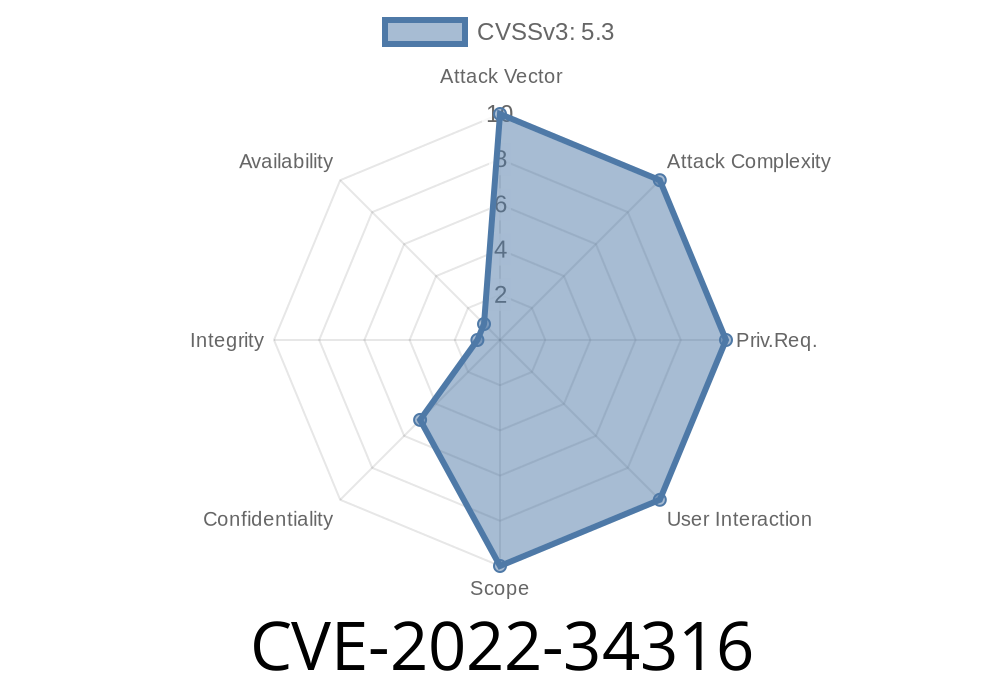IBM CICS TX is an important software for transaction processing, widely used in enterprise environments. In June 2022, a serious vulnerability (CVE-2022-34316) was discovered in version 11.1 of IBM CICS TX. This flaw, reported as IBM X-Force ID: 229452, results from improper "neutralization" of web scripting syntax in HTTP headers—basically, it fails to sanitize some scripts. This means a hacker might inject scripts that, when read by a vulnerable component or browser, could perform unauthorized actions.
In simple terms: If you're using IBM CICS TX 11.1 and handle or process HTTP requests, you risk an attacker sneaking malicious JavaScript which could be read and run by some browsers or API tools.
What went wrong?
Some applications—including IBM CICS TX—sometimes echo back HTTP headers received from clients. If these headers hold script tags or other JavaScript, and the app doesn't filter them out, browsers or browser-like tools may process and run them as real scripts. This is a variation of Cross-Site Scripting (XSS), but occurring inside headers—not the main HTML content.
Imagine a situation where a user sends the following malicious HTTP header
X-Forwarded-For: <script>alert('XSS');</script>
If the backend application copies this back to some response, or logs, or another downstream service that displays it in a web component, that script will be executed.
In IBM CICS TX 11.1, the flaw is that it doesn't scrub or "neutralize" those script pieces when relaying headers, risking script injection.
Code Example: How Could an Attack Look?
Here is a basic demonstration in Python which simulates how an attacker might exploit this on a vulnerable server that reflects headers:
Attacker sends
import requests
url = 'http://vulnerable-cics-server.example.com';
# The malicious header with some JavaScript
malicious_headers = {
'X-User-Note': "<script>alert('CICS TX 11.1 Vulnerable!');</script>"
}
response = requests.get(url, headers=malicious_headers)
print(response.text)
If the server responds by dumping headers (e.g., in a debug panel or error page) without cleaning them:
<h2>HTTP Headers Received</h2>
<ul>
<li>X-User-Note: <script>alert('CICS TX 11.1 Vulnerable!');</script></li>
</ul>
If this response is rendered in an admin's or user's browser, the JavaScript executes, popping up an alert or worse (like session cookies theft).
Here's a summary of a practical exploit workflow
1. Find a Reflection Point: Locate a place where IBM CICS TX 11.1 reflects HTTP headers (e.g., debugging view, error logs, headers in HTTP responses).
Send Malicious Header: Craft and send an HTTP request with a header like:
X-Comment: <script>stealCookies()</script>
3. Victim Interaction: The malicious payload is reflected in response visible to users/admins, or in web-based logs/tools built on top of CICS TX.
4. Script Execution: When another user or admin views this data in a browser, the script runs. Attacker can steal session, hijack account, maybe more.
IBM Security Bulletin:
https://www.ibm.com/support/pages/node/6603265
NVD Entry for CVE-2022-34316:
https://nvd.nist.gov/vuln/detail/CVE-2022-34316
IBM X-Force Exchange:
https://exchange.xforce.ibmcloud.com/vulnerabilities/229452
Mitigation
IBM fixed this in later patches. If you're running CICS TX 11.1, update as soon as possible using IBM provided fixpacks.
Conclusion
CVE-2022-34316 is a reminder that even HTTP headers—not just form inputs or URLs—can be a dangerous vector for script injection. Admins and developers should always sanitize everything coming from the client, even data less commonly perceived as unsafe, like headers. If you’re using IBM CICS TX 11.1, check your version and patch right away.
Timeline
Published on: 11/14/2022 19:15:00 UTC
Last modified on: 11/16/2022 19:07:00 UTC
